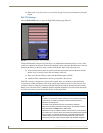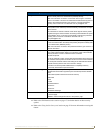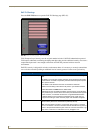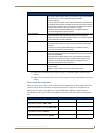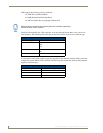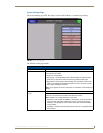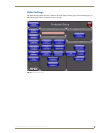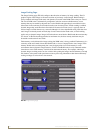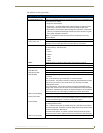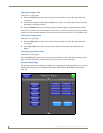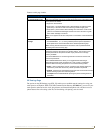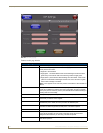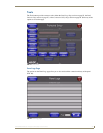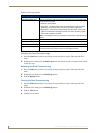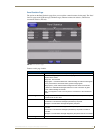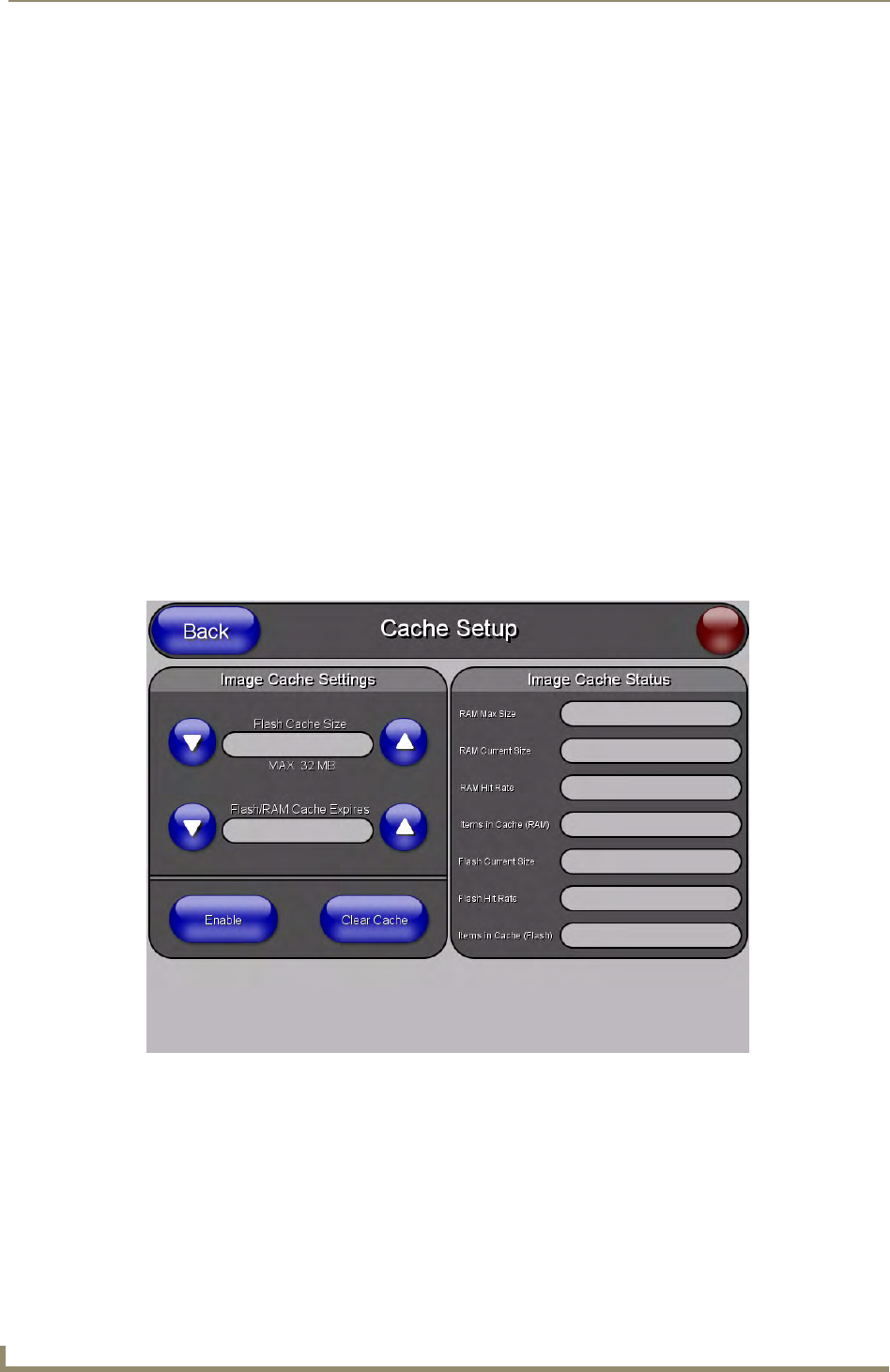
Setup Pages
90
MVP-8400i Modero Viewpoint Wireless Touch Panels
Image Caching Page
The Image Caching page (FIG. 68) configures the allocation of memory for image caching. The G4
graphics engine caches images to decrease load time of previously viewed images. RAM caching is
always enabled, and images (both static and dynamic) are stored in the RAM cache as they are viewed.
The size of RAM cache is automatically configured to take into account available memory versus
memory that may be needed by the panel later. As the RAM cache approaches its maximum size, the
oldest items in the cache may be discarded to make room for newer items. If Flash caching is enabled,
dynamic images that would have been discarded will be moved to Flash, since it is typically faster to
retrieve images on Flash than across a network (although it is slower than RAM cache). Note that since
static images are already stored on Flash, they are never moved to the Flash cache, so Flash caching
applies only to dynamic images. Images in Flash cache are moved back to RAM cache the next time they
are viewed. As the Flash cache approaches its maximum size, the least recently used items may be
discarded to make room for new items.
Flash memory can be allocated for image caching, but RAM cache is always enabled. Flash memory is a
secondary cache and is much slower than RAM cache, as it uses Compact Flash to store images. Flash
memory should not be used frequently, but it may be appropriate to use Flash memory in some
environments that are dynamic image intensive, at times when RAM cache is easily exhausted and the
time taken to access Flash memory would be faster than network latency. For example, when large
dynamic images are being used over slow wireless links, putting the images into Flash memory can help
the situation, as the panel could spend more resources processing information rather than continuously
waiting on images to arrive from a slow network.
FIG. 68 Image Caching Page



